- Guitar Songwriting: A compassionate Guide (Part 1)
- Writing your first guitar song
- MODIFYING AN EXISTING SONG
- FINDING INSPIRATION
- SONG STRUCTURE
- LYRICS
- And remember, the Sheet Music Library is here to help you with thousands of guitar, piano and voice scores!
Guitar Songwriting: A compassionate Guide (Part 1)
Writing your first guitar song
Writing a song is a gift to yourself—and sometimes a gift to the world. Song is one of the most powerful communication tools we have as human beings: a slice of life encapsulated in words, melody, and accompaniment. Many of us would like to write songs but find it
hard to get started. We find it very intimidating to commit ourselves to words, notes, and chords and then to paper, recordings, and listeners’ ears. Or, once we have started, we find it pretty much impossible to develop ideas into satisfactory songs. Here are some simple techniques that will help you get started and help you develop your ideas into songs that work.
MODIFYING AN EXISTING SONG
If getting the ball rolling is particularly intimidating, I encourage you to pick out a song that you admire and know the lyrics and melody to. It doesn’t matter if you can’t play the song. Remember that this is an exercise with the sole purpose of easing you slowly into your own creativity. The results will not be judged. Once you’ve chosen the song, choose a verse you like the feel of and rewrite it. One approach is to keep the same melody and write new words that fit the rhythm and the narrative purpose for that part of the song. You can also try leaving the words alone and rewriting the melody.
This might be a little harder because the melodies of our favorite songs tend to get deeply entrenched in our memory. One way to help make this technique work is to change the key of the song. A third approach is to create a new chord structure that fits with the original lyrics and melody. This can be a lot of fun for more experienced players who understand chord pro-gressions, inversions, and modes, but it might be intimidating to the less experienced musician. If you ever do feel intimidated during these exercises, try taking a small step–just changing one line or even one or two words, for example—rather than a huge stride.
FINDING INSPIRATION
OK, so you’re ready to go solo. What are you going to write about? The single most com-mon inspiration for songs is love: the lack of it, the hope for it, the experience of it, the loss of it. You might not want to bare your soul so intimately in your first song, though, so let’s look at some other options.
- Experiences. Has anything notable happened to you lately? Some happenstance that changed your way of seeing life, yourself, someone else, the world? Did you witness some-thing unusual? Remember a childhood memory, perhaps? There’s lots of potential here.
Political causes. Do you feel strongly about a particular cause? Write a song about it. This is a deep well of inspiration for the folk movement.
- History. Another great source for folkies. Lots of rich material.
- People. Think about someone you admire, someone who inspires you.
- Objects. This may sound like an odd suggestion, but objects have inspired many great songs. Artists write songs about bridges, buildings, ships … day-old banana pudding.
- Fantasies and made-up occurrences. They can be impossible, fanciful, or just plain untrue. One of my favorite songs, “Something About Him” by Brady Earnhart, was written about a school days experience the writer invented.
- Dreams. I was going to put this under fantasies, but there are invented situations that can and do come true.
Whatever subject you choose, you need to look carefully at how you think and feel about it. This is what actors mean when they ask, “What’s my motivation?” Does the sub-ject make you feel anger, pain, joy, tenderness? Where do your thoughts take you con-cerning this subject? At this point it would be a good idea to take notes on your thoughts and feelings. They’ll help you build a framework for the song and give shape to the way your words and melody develop.
SONG STRUCTURE
Writing a song is almost always an exercise that involves alternating structured thought with unstructured: intermittently letting go of intellectual control and expectations and allowing your creativity to flow. Structured thought allows order to be maintained, and unstructured brings in the unexpected or unconscious.
At this point, you need to decide what kind of song structure you’re going to use. Do you want to use a structure you’re familiar with from another artist’s work? Or do you want to let your poetic and melodic muse run free and just see what structure comes out? If there’s any doubt concerning structure, I’d recommend starting with a simple 12-bar blues. This structure has been hardwired into the musical awareness of the Western world for the last half century. It’s also sparse, so it encourages minimal use of words and limited melodic movement. Repetition is fundamental to the form.
In a 12-bar blues, the first line (sung over the first four bars) usually introduces the core subject matter and then comments on it, often in a way that brings tension to the subject. Most of the third bar and all of the fourth bar are generally instrumental. The next four bars might repeat the subject and expand on the comments and tension, and the last word usually rhymes with the last word of the first line. The seventh and eighth bars are usually instrumental. The last line should bring some kind of resolution to the subject, much as the melody and chordal turnaround brings resolution to the music. The 12th bar is most often the turnaround—a chordal/melodic progression, usually without words, that brings the song back to the top, to the next verse, which is structured like the first.
LYRICS
For most songwriters, the words of a song come first. Others start with the melody or with a chord progression and add the other elements one at a time. And for some, lyrics and melody come at the same time. Let’s start with the lyrics.
Go back to your notes on the general subject matter of the song you want to write. Do any of the words and phrases jump out at you? Do some of them seem to fit together either because of their meaning or because of their sound or rhythm?
For our 12-bar blues, I wrote down a few words about being a new songwriter, what it might mean and what it might feel like: trying to write a song I love songs want to do it music in my soul scary new going to do it determined. Looking at these words, I came up with the line:
I’m tryin’ to write a song and it’s kinda new to me
OK, that works. Note that I picked an easy rhyme (“me”) and remembered that this has to fit over three or so bars of a midpaced blues. For the second line, I wanted to repeat the core subject and comment further. I looked at the word scary and got:
I’m tryin’ to write a song and I’m scared as I can be
In order to stick to the standard 12-bar blues arrangement (which is now playing in my head), we need to add a brief pause to the lyrics after the word it’s in the first line and I’m in the second. This leaves us with:
I’m tryin’ to write a song and it’s… kinda new to me I’m tryin’ to write a song and I’m … scared as I can be
Hmm. That’s fine. Now I need a resolution. Going back to my original notes, I find the obvious resolution of “going to do it.” An alliteration—several words in a row starting with the same consonant—jumps out at me:
But I’m gonna get it goin’
I’ve got to admit that I’m a sucker for nice alliterations, and this one is particularly appealing because gonna get it goin’ comes with a built-in rhythm. Another look at my notes does nothing for me, so I write down the first thing that comes into my head:
But I’m gonna get it goin’… and I’m almost there you see
Now, I quite like the almost, but the there you see is pretty lame. Still, I never intended to leave things like that. I just wrote this line to help me come up with something more appropriate. Next I decide to be positive and note that I’ve come to this point fairly eas-ily—almost painlessly—and get excited about:
But I’m gonna get it goin’ almost painlessly
A few minutes’ detachment gets me to see that it’s an untidy rhyme and that painlessly somehow doesn’t fit with gonna get it goin’. So I fiddle with painlessly and find pain-free, which I like the feel of. When I attach it to the line, I get:
But I’m gonna get it goin’… and I’m almost there pain-free
So, now we have:
I’m tryin’to write a song and it’s… kinda new to me
I’m tryin’ to write a song and I’m… scared as I can be But I’m gonna get it goin”… and I’m almost there pain-free
A brief go at singing this verse shows me that tryin’ falls on the 1 of the first and fifth bars and that the pause in each line falls on the 1, with the next word starting on the off-beat. I’m fairly certain that the blues arrangement in my head will work best for this song, but I’ll try a few different feels and even recite the words aloud a few times (as straight as I can) to see if any other feel comes up. No, the blues feel seems to work best, but one thing that did jump out at me is that gonna get it goin’ begs to have the pace of the rhythm accelerated for those words.
Now I’ll sing the verse aloud unaccompanied until I’m happy with the way it flows. Only after this step do I pick up my guitar. It turns out I’m singing in the key of E minor, which leads me to a standard blues chord progression with Em, A7, and B7.
Alright! Our song is begun. I say our because I encourage you to write further verses based on the same structure. Perhaps when you’re done with this song, you’ll write your own from scratch. Remember to follow the steps we’ve discussed and not to bite off more than you can chew at any given moment. Good luck!
And remember, the Sheet Music Library is here to help you with thousands of guitar, piano and voice scores!

3 Hour Relaxing Guitar Music: Meditation Music, Instrumental Music, Calming Music, Soft Music
Browse in the Library:
| Artist or Composer / Score name | Cover | List of Contents |
|---|---|---|
| Will B. Morrison – Melody in F (Syncopated Waltz) sheet music |
 |
|
| Will Young – Anything Is Possible | ||
| William Best I Love You For Sentimental Reasons (Jazz Standard) | William Best I Love You For Sentimental Reasons (Jazz Standard) | |
| William Eveleth – Blues Jazz and Rock Riffs For Keyboards |
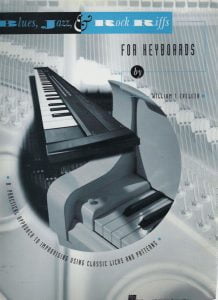 |
|
| William Gillock In Old Vienna Musescore File.mscz | ||
| William Gillock Valse Etude In Romantic Style Musescore File.mscz | ||
| William Joseph – Within (Songbook) (William Joseph) |
 |
William Joseph – Within (Songbook) (William Joseph) |
| William Robinson – My Girl | ||
| William Russo Composing Music A New Approach (ebook) |
 |
|
| Willie Dixon Preacher Of The Blues (2011) Mitsutoshi Inaba (Book) Biography |
 |
|
| Willie Fugal S Blues Piano transcription |
 |
|
| Willie Nelson – Always on My Mind Sheet Music |
 |
|
| Willie Nelson – On My Mind | ||
| Willie The Lion Smith – Finger Buster transcription |
 |
|
| Willie The Lion Smith Echo of Spring transcription |
 |
|
| Willow Weep For Me Words And Music By Ann Ronell 1932 Jazz Standard (Vintage sheet music) |
 |
|
| Wim Mertens – American Minimal Music La Monte Young Terry Riley Steve Reich Philip Glass |
 |
Book La Monte Young Terry Riley Steve Reich Philip Glass |
| Wim Mertens – Close Cover | Wim Mertens – Close Cover | |
| Wim Mertens – Struggle For Pleasure | Wim Mertens – Struggle For Pleasure | |
| Wim Mertens – Time Passing |
 |
|
| Wim Mertens Humility |
 |
|
| Wim Mertens Lir |
 |
|
| Windham Hill piano sampler |
 |
Windham Hill piano sampler |
| Windy Whistle (Le Renard et l’Enfant OST) Alice Lewis | ||
| Wings (McCartney) – Greatest Hits |
 |
Wings sheet music |
| Winifred Atwell Album Of Rags No 1 Original arrangements Vintage songbook |
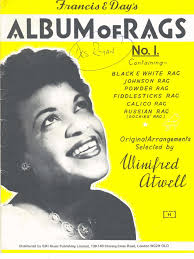 |
Winifred Atwell Album Of Rags No 1 Original arrangements Vintage songbook |
| Winifred Atwell Marguerite Monnot The Poor People Of Paris ( La Goualante Du Pauvre Jean) Piano Solo |
 |
|
| Winnie The Pooh The Honey Tree Sheet Music (Disney) |
 |
Winnie The Pooh The Honey Tree Sheet Music (Disney) |
| Winter Sonata O.S.T. (Ryu) | ||
| Winter Wonderland Other Christmas Favorites Songbook Piano Vocal guitar Chords |
 |
Winter Wonderland and Other Christmas Favorites Songbook Piano Vocal guitar Chords |
| Wish You Were Here – Pink Floyd (Musescore File).mscz | ||
| Within Temptation – Our Solemn Hour | ||
| Without you (Maria Carey) | ||
| Without You (Mariah Carey Piano Arr ) (Musescore File).mscz | ||
| Wiz Khalifa & Charlie Puth See You Again (Solo Piano) |
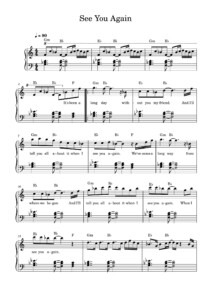 |
|
| Wolf Wagner Paraphrase Über Die Walküre |
 |
|
| Wolfe Richard Legit Professional Fake Book More Than 1010 Songs |
 |
Wolfe Richard Legit Professional Fake Book More Than 1010 Songs |
| Wolfenzon – Stücke für Klavier | Wolfenzon – Stücke für Klavier | |
| Womack, Bobby – Midnight Mover My Autobiography The True Story of the Greatest Soul Singer in the World (Book) |
 |
|
| Woman in love (Barbra Streisand) | ||
| Women Of Pop Rock Songbook Twenty-Two Hot Hits for Easy Piano |
 |
Women Of Pop Rock Songbook Twenty-Two Hot Hits for Easy Piano |
| Wonderful Christmastime -Paul Mccartney (Wings) (Musescore File).mscz | ||
| Wonderful Life – Black (Easy Piano Solo Sheet Music) (Musescore File).mscz | ||
| Woody Allen – A propósito de nada (autobiografía)(2020) |
 |
|
| Woody Allen – Apropos of Nothing (2020) Autobiography | Woody Allen – Apropos of Nothing-Simon and Schuster (2020) Cover | |
| Woody Guthrie This Land Is Your Land (Easy and Intermediate Piano Solo) |
 |
|
| World Hits Of Jazz Standard |
 |
World Hits Of Jazz Standard |
| Wuthering Heights (Ryuichi Sakamoto) | ||
| Wynton Kelly – Autumn Leaves Solo transcription | Wynton Kelly – Autumn Leaves Solo transcription | |
| Wynton Kelly – Dark Eyes Solo Piano transcription |
 |
|
| Wynton Kelly – Dark Eyes Solo Piano Transcription (Musescore File).mscz | ||
| Wynton Kelly – Full transcriptions | Wynton Kelly – Full transcriptions | |
| Wynton Kelly – I Dig of You Solo transcription |
 |
|
| Wynton Kelly – If I should Love You Solo transcription |
 |
|
| Wynton Kelly – Jazz Piano Collection |
 |
Wynton Kelly Piano Collection- |
| Wynton Kelly – Someday my prince will come (Piano solo) |
 |
|
| Wynton Marsalis Trumpet Genius Gourse, Leslie (Book) |
 |
|
| Wynton Marsalis – Caravan (Solo) |
 |
|
| Wynton Marsalis – Darn That Dream (Solo) | Wynton Marsalis – Darn That Dream (Solo) | |
| Wynton Marsalis – Dealfayos Dillema (Solo) |
 |
|
| Wynton Marsalis – Standards (sheet music transcriptions) |
 |
Wynton Marsales – Standards (sheet music transcriptions) |
| Wynton Marsalis In The Court Of King Oliver (Trumpet and rhythm section) |
 |
|
| Wynton Marsalis Omnibook For B Flat Instruments Transcribed exactly from his recorded solos |
 |
Wynton Marsalis Omnibook For B Flat Instruments Transcribed exactly from his recorded solos |
| Wynton Marsalis Struttin’ With Some Barbeque (Live) Wynton Marsalis’ Trumpet Solo |
 |
|
| Xenoblade Chronicles 2 Loneliness Kenji Hiramatsu | Xenoblade Chronicles Opening Theme Game sheet music | |
| Xenoblade Chronicles Opening Theme Game sheet music Yoko Shimomura |
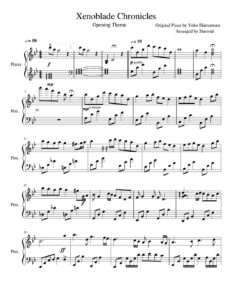 |
|
| Yamaha E443 Songbook digital keyboard PSR-E443 |
 |
|
| Yamaha Keyboard Songbook |
 |
Yamaha Keyboard Songbook |
| Yamaha Keyboard Songbook Song-Buch |
 |
|
| Yamaha PSR E373 YPT-370 PSR-EW310 Song book |
 |
|
| Yamaha Song Book |
 |
Yamaha Song Book |
| Yamaha Song book |
 |
Yamaha Songbook |
| Yamaha Songbook |
 |
Yamaha-Songbook |
| Yamaha songbook 50 Piano Greats for the piano (Yamaha collection) |
 |
50 Piano Greats for the piano (Yamaha collection) |
| Yamaha Songbook Contemporary Vol. 1 |
 |
Yamaha Songbook Contemporary Vol. 1 |
| Yana Bobalik Mysterious Music Я.Бобалік Songbook |
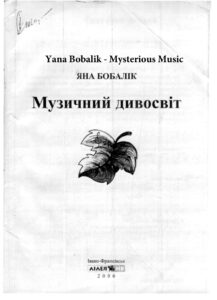 |
|
| Yana Bobalik Secret Music From Mysterious Music Я.Бобалік Таемна Музыка |
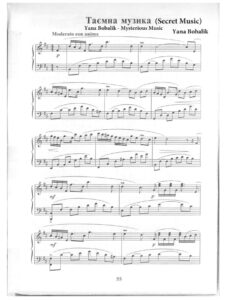 |
|
| Yann Tiersen Rue des Cascades (sheet music) | yann tiersen cascades sheet-music | |
| Yann Tiersen Mother’s Journey |
 |
|
| Yann Tiersen – Tabarly Sheet Music |
 |
|
| Yann Tiersen – Comptine Dun Autre ete | ||
| Yann Tiersen – La Dispute – Amelie Poulain | ||
| Yann Tiersen – La Valse d’Amelie Poulain | Yann Tiersen – La Valse Damelie | |
| Yann Tiersen – Le moulin – Amelie Poulain | Le Moulin – Amelie Poulain | |
| Yann Tiersen – Six pièces pour piano – Volume 2 – Amélie Poulain |
 |
Yann Tiersen – Six pieces pour piano – Volume 2 – Music Sheet |
| Yann Tiersen – Summer 78 | ||
| Yann Tiersen – Sur Le Fil |
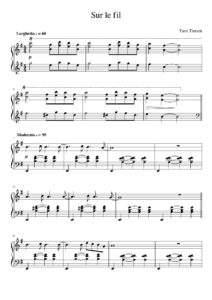 |
|
| Yann Tiersen – Pièces pour piano vol 1 et 2 + divers |
 |
Yann Tiersen – pièces pour piano vol 1 et 2 + divers  |
| Yann Tiersen Eusa 2015 Songbook |
 |
|
| Yann Tiersen J’Y Suis Jamais Alle piano solo (Amélie) |
 |
|
| Yann Tiersen Onze Pièces Pour Piano |
 |
Yann Tiersen Onze Pièces Pour Piano |
| Yann Tiersen Partitions intégrales Piano Works 1993-2004 | Yann Tiersen Partitions intégrales Piano Works 1993-2004 | |
| Yann Tiersen Tabarly Complete Book For Piano |
 |
|
| Yanni In My Time (Piano Solos) Sheet Music |
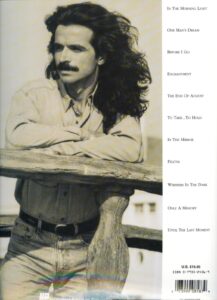 |
Yanni In my time piano solos |
| Yanni One Man’s Dream |
 |
|
| Yanni – Per Piano (Piano book) |
 |
Yanni – Per Piano |
| Yanni – In The Morning Light | ||
| Yanni – Nostalgia | ||
| Yanni – One Man’s Dream (Musescore File).mscz | ||
| Yanni -The Best of |
 |
 |
| Yanni Ethnicity Book |
 |
Yanni Ethnicity Book |
| Yaron Herman – Hallelujah (Leonard Cohen) transcription |
 |
|
| Yashal (Elisa) | ||
| Yasuharu Takanashi – Naruto Shippuden OST – Loneliness |
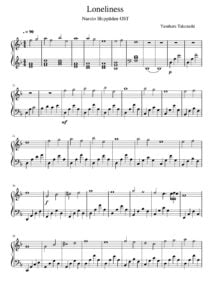 |
|
| Yedidia, Ronn Piano Sonata No 3 outcries (manuscrit) |
 |
|
| Yehezkel Raz Ballerina Piano Solo sheet music |
 |
|
| YES Fragile |
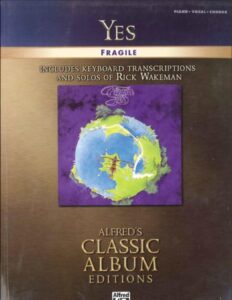 |
YES Fragile |
| YES – Complete Deluxe Edition |
 |
YES – Complete Deluxe Edition |
| Yes Close To The Edge The Story Of Yes (Book) |
 |
|
| Yes The Best Of Guitar Songbook with TABs |
 |
Yes The Best Of Guitar Songbook |
| Yesterday Piano Cello – Piano Sheet Music – Paul McCartney |
 |
|
| Yesterday Piano vocal guitar Songbook Featuring Music From the OST |
 |
|
| Yesterday The Beatles For Jazz Piano (Musescore File).mscz | ||
| Yesterday when I was young (Charles Aznavour) | ||
| Yimkin Law ( Et maintenant on va où OST) Racha Rizk | ||
| Yiruma – 27 May | ||
| Yiruma – Destiny Of Love | ||
| Yiruma – Dream | ||
| Yiruma – Dream A Little Dream Of Me | Yiruma – Dream A Little Dream Of Me | |
| Yiruma – Falling |
